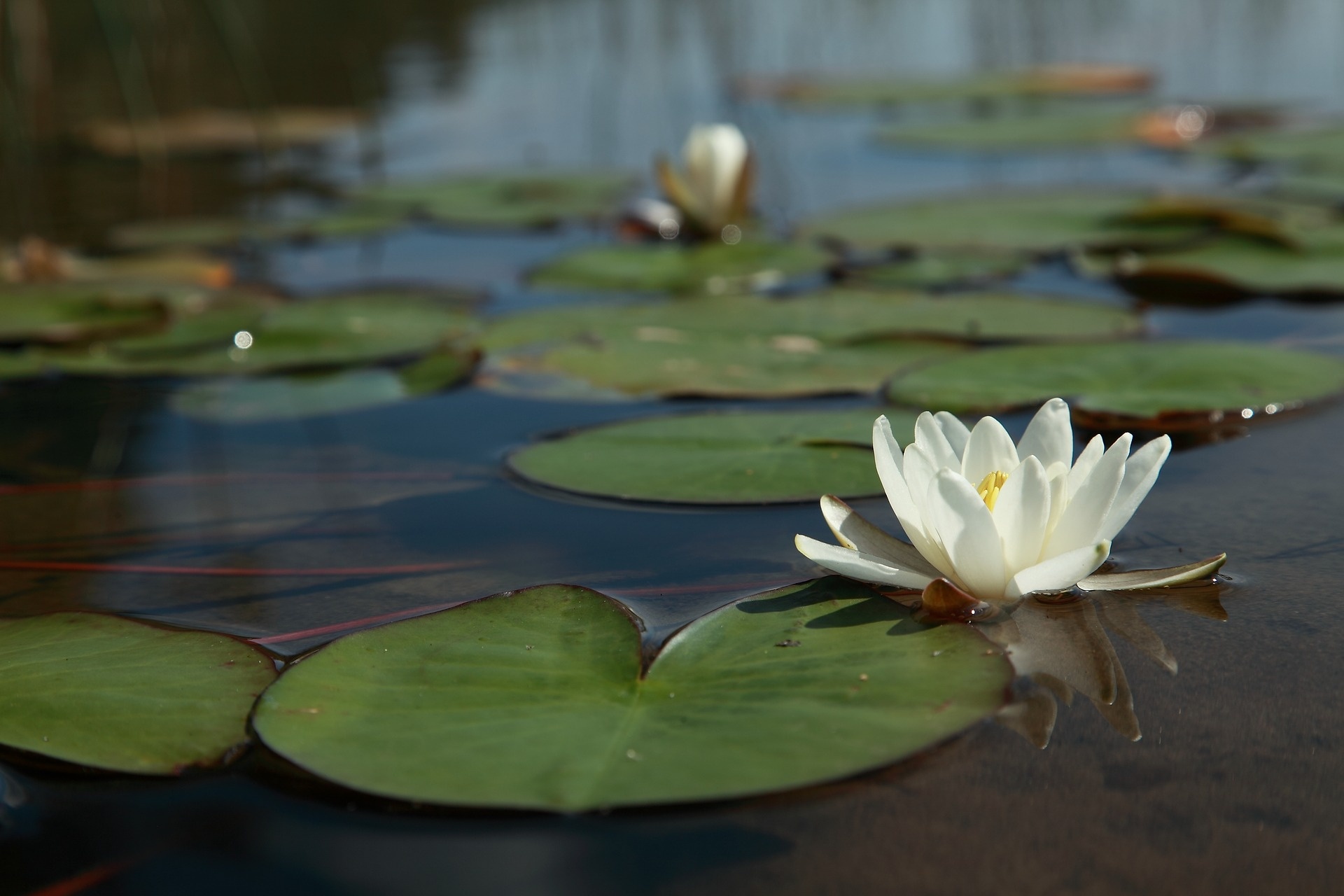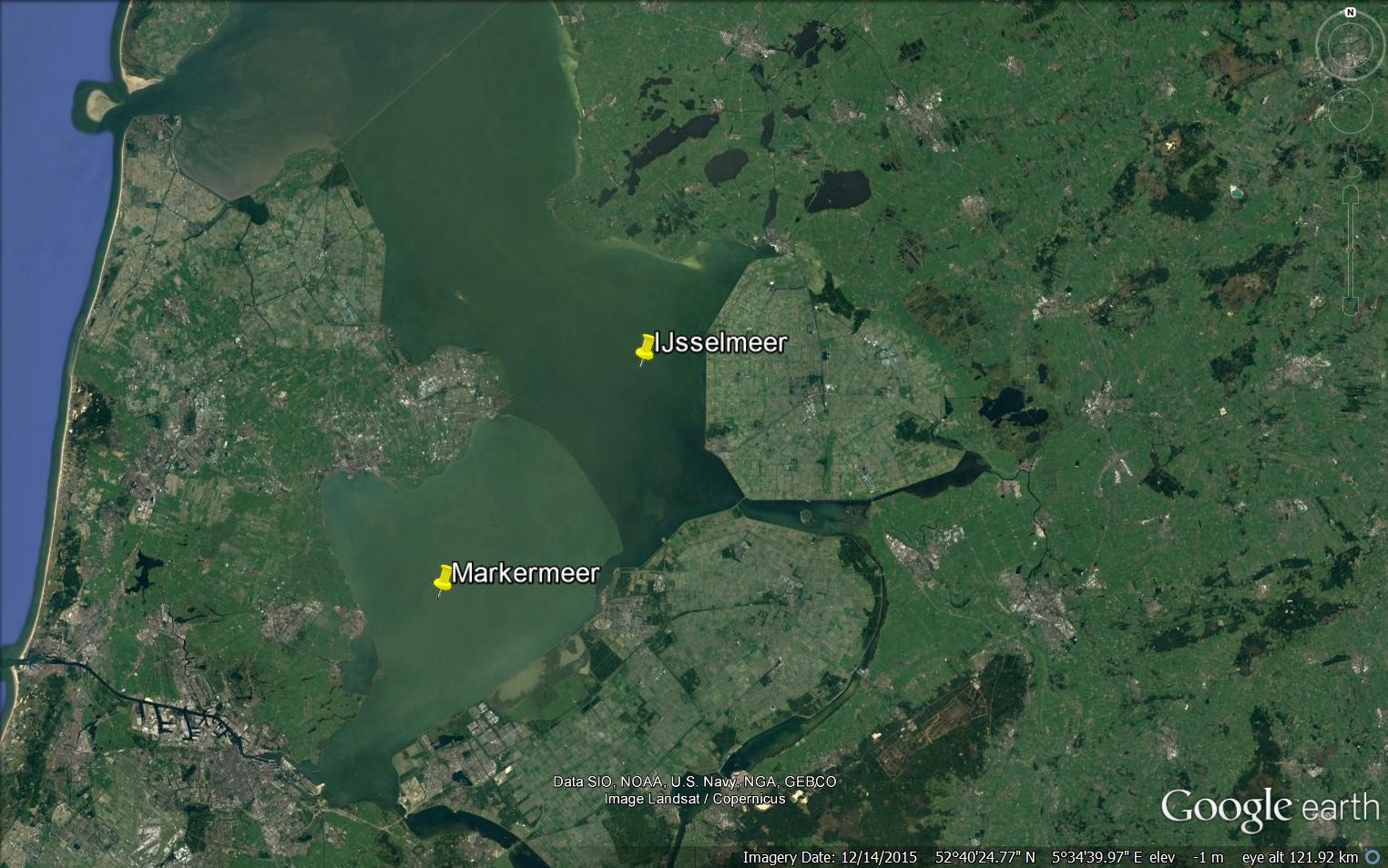3.Turbidity and sediment dynamics
The stable state theory states that aquatic ecosystems can switch between clear and turbid conditions. Continuous erosion and resuspension of soft bottom material, driven by wind action on the shallow and wind-exposed lake causes high turbidity and low light transparency of the lake waters (Kelderman et al. 2012). A gradual increase of the suspended sediment concentration / turbidity and the associated increase of light attenuation in the water column causes ecosystem deterioration (Vijverberg et al. 2011). Below, several characteristics of a water body are described that influence sediment resuspension, giving insight into the complexity of sediment dynamics in this lake.
Type of sediment
The type of sediment present in a water body is one of the most important factors contributing to turbidity. In the Netherlands, a high diversity of substrates occurs, ranging from of gravel, sand, clay, sediment and peat in a variety of combinations. Dependent on grain size and density, several types of these substrates are especially susceptible to resuspension. The smallest particles, inorganic lutum (with a grain size of less than 2µm) and fine sediment (between 2 and 63 µm) are easily brought into suspension by wave and current action. Organic peat particles, although of large size, are also suspended easily because of their porous characteristics and low density. Sediments with larger grain sizes like sand (0,063 µm – 2 mm) do not contribute significantly to lake turbidity. They settle relatively fast after resuspension.
Fish and sediment
The resuspension of sediment particles in shallow lakes is often caused by feeding activities of bottom dwelling – or benthivorous – fish like bream and common carp. These fish species sieve through the sediment in search of small prey like small crustaceans, worms, insects or snails. As the sediment is loosened by the foraging fish, it becomes more susceptible to resuspension by wind and waves. Benthivorous fish also contribute indirectly to turbidity via the release of soluble phosphate from sediment particles (desorption and excretion). Algae can take these elements from the water column, resulting in an increase in algal densities and subsequently in an increase in turbidity. Besides, with their sieving activities, these fish frequently disturb the bottom and thus prevent macrophytes to settle.
Waves in relation to the water body
Wave and current action is an important factor in the resuspension of sediment. The actual resuspension depends heavily on wind speed, fetch, depth and type of bottom substrate of the lake. The fetch is the maximum distance (in the direction of the wind) that air can travel over the lake to produce waves. In general it can be stated that, with lower wind velocities and an increasing lake depth, the proportion of the lake where wave resuspension occurs decreases. Still, the actual amount of suspended sediment strongly depends on the type of sediment. Therefore, turbidity of lakes with similar fetch and depth can differ largely due to differences in the sediment composition. In lake Markermeer, for instance, there is a virtually unlimited supply of new fluffy sediment which is highly susceptible to suspension. This, in combination with the shallowness of the lake and its relatively large open water areas causes the high turbidity of the lake waters (Kelderman et al. 2012).
Macrophytes and sediment
Macrophytes in shallow lakes can prevent resupension of sediments and therefore promote water clarity. Several species (e.g. charophytes) form dense mats on the lake bottom, making it difficult for waves and currents to suspend sediment and preventing fish to forage in the substrate. Wave action is also limited to the water column above the vegetation mats. In general, beds of macrophytes also act as a net sink for sediments and algae. Strands of macrophytes reduce wind-induced current, thus enabling small particles to settle.

Fluctuating water levels
Fluctuating water levels can also be a factor in increasing the transparency of shallow lakes. During periods of low water levels, iron available for binding phosphorus regenerates through oxidation on the emerged banks. If water levels rise again, the iron keeps on binding phosphorus and phosphorus levels and algal growth decrease, thus enhancing water transparency. Whether and to what extent this occurs and what impact it has on the entire lake ecosystem depends on many factors, such as water level variation, size of the lake and availability of iron.
Turbidity of lake Markermeer
Besides nutrient loads, high turbidity can be disruptive for lake ecosystems. Take for example the shallow lake Markermeer in the Netherlands, created in 1976 by damming the south-western part of the IJsselmeer. The initial idea was to reclaim the lake and create new land in the vicinity of Amsterdam. Protests aiming to preserve this ecologically and recreationally important area, combined with a more complex (ground) water dynamics than initially thought, ultimately resulted in cancellation of the plans. The ecological value of the lake, however, started to deteriorate not long after its creation. Especially bird populations dropped significantly.

compared to the IJsselmeer.
An important factor in this change of the ecosystem was the complex sediment behaviour, which severely increased turbidity. Nowadays the Markermeer is characterised by unclear waters, locking the system in a turbid state. Availability of large quantities of soft, easily mobilised sediment in combination with strong wind dynamics in the relatively shallow lake are the main causes of the turbidity. Wind is the driver of the mobilisation and mixing process. The relatively large surface (about 700 km2) of the lake makes it very susceptible to wind action. These winds induce waves and currents in the water column. Wave and water current power continuously erode and suspend sediments into the water column, creating high levels of turbidity. Additionally, the sediment is loosened by bioturbation due to meiofauna living in or on the lake bed, making it more susceptible to wave and current action.
To improve the water quality of lake Markermeer, a new island group called ‘Marker Wadden‘ is being constructed in the lake. The construction started in 2016, and the first island group should be finished in 2020. These islands will trap sediment, reducing the turbidity of the lake. Moreover, the islands will form a large and diverse habitat for many plant and bird species, transforming the lake Markermeer from a ecological desert to a ‘birds paradise’.
